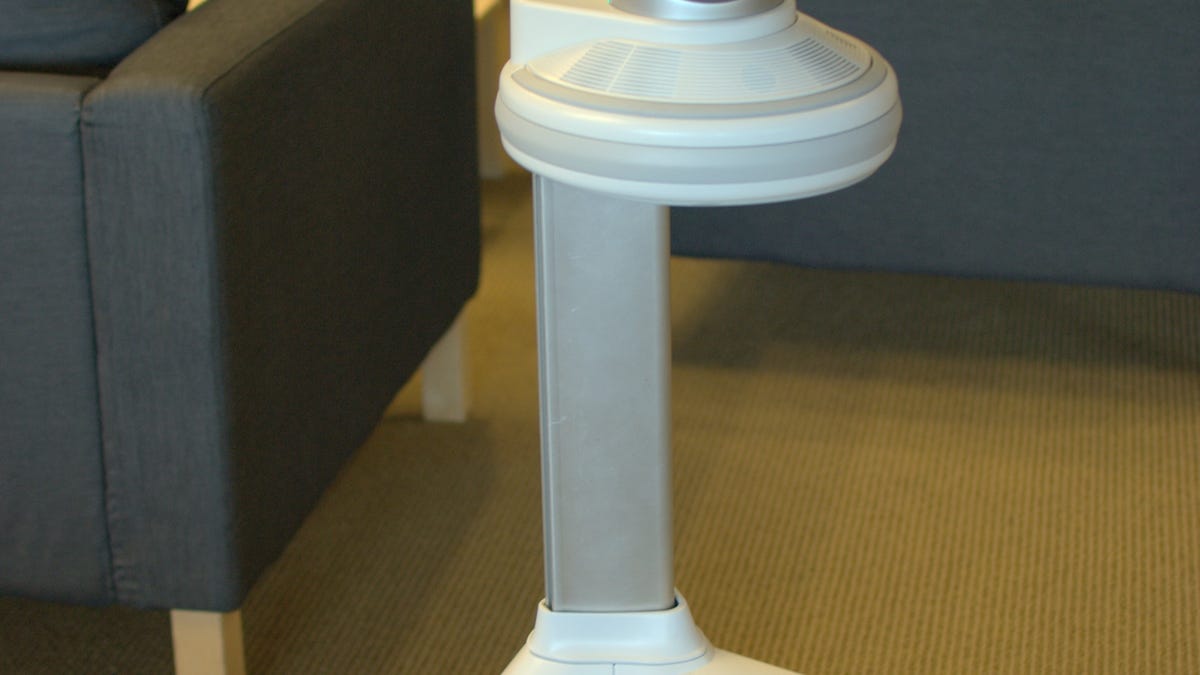iRobot's Ava: Have tablet, will travel
iRobot's tablet-sporting Ava mobile robot will get her debut this year in hospitals testing remote diagnosis via videoconferencing. Next step: people's homes?

BURLINGTON, Mass.--Someday soon Ava the robot may bring you to the Roomba vacuum cleaners at Best Buy or call you if an elderly relative at home fell down and can't get up. But first she has to get in the good graces of doctors.
Ava is iRobot's three-wheeled pedestal-shaped robot that sports a tablet computer as its "head," the primary user interface. If the pieces fall into place as its creators hope, Ava will be the company's ticket into new markets beyond its remote-controlled military bots and Roomba-led home cleaning products.
iRobot will start trials this year of Ava in a couple of her target industries of health care, retail, and building security, CEO Colin Angle said in an interview with CNET. During a demo last week at the company's headquarters here, a prototype Ava smoothly navigated through iRobot's office space based on a map it had generated itself.
Although its movements were not flawless (table tops remain a challenge), Ava points to a new era in mobile robots brought about by advances in other technologies, notably by better sensors.
"So much of robotics has to do with physical motion--navigation around our environment and doing increasingly high-level tasks--it makes these two initial markets (of military and home cleaning) seem pedestrian versus the dream of what's possible," said Angle.
Ava is also an effort to leverage the army of existing mobile software developers who will suddenly be able to write user interface or cloud computing apps for a robot. For example, in just a few weeks, one of the 35 or so engineers working on Ava was able to write an Android application where Ava creates a 3D map of interior space and a 3D Ava control panel.
Shake hands with Ava
Watching Ava scoot from one end of an office lounge to another, it's not hard to imagine Ava navigating a hospital to start a videoconference between a doctor and patient or between a person moving through an office and a remote colleague. Or perhaps it could usher people around hotels and public buildings or tool around office buildings to monitor for security, said iRobot's Thomas Allen, the program manger for Ava.
Ava's autonomy stems from a barrage of sensors, including laser range finders and the same sensor from PrimeSense used for the gestural interface with Microsoft's Kinect gaming consoles.

